Fouls play a significant role in the high-paced and competitive world of the NBA. Understanding the concept of fouls and their implications is crucial for both players and fans. In this article, we will dive into the intricacies of NBA fouls to provide a comprehensive understanding.
What is a Foul in NBA?
Fouls in the NBA refer to rule violations that result in penalties against the offending player or team. These penalties can range from free throw opportunities for the opposing team to the player fouling out of the game. Fouls can occur due to a variety of illegal actions, including physical contact, hindering the progress of an opponent, or unsportsmanlike behavior.
Types of Fouls in NBA
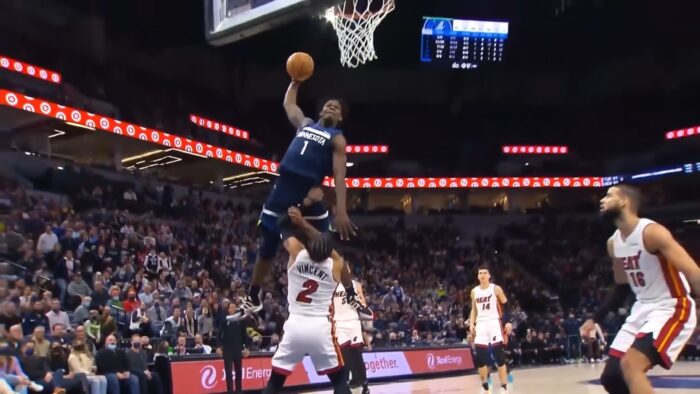
| 1. Personal Foul | A personal foul is the most common type of foul in the NBA. It occurs when a player makes illegal physical contact with an opponent. Examples include pushing, holding, or tripping. |
| 2. Shooting Foul | A shooting foul occurs when a defender makes contact with a shooter while they are attempting a shot. If the shot is missed, the shooter is awarded free throws. If the shot is made, the points are counted, and the shooter may have an additional free throw. |
| 3. Blocking Foul | A blocking foul is called on a defender who moves into the path of an offensive player and impedes their progress. This foul is usually called when the defender is not in a legal guarding position or is moving laterally. |
| 4. Charging Foul | A charging foul occurs when an offensive player runs into a defender who has established a legal guarding position. The offensive player is called for the foul, and possession of the ball is awarded to the defensive team. |
| 5. Technical Foul | A technical foul is called for unsportsmanlike behavior, such as arguing with referees, using profanity, or showing disrespectful conduct. It results in a free throw for the opposing team and sometimes additional penalties. |
These are some of the types of fouls that can occur in the NBA. Each foul has specific rules and consequences, and understanding them can enhance your knowledge and enjoyment of the game.
Common Five in NBA
Get ready to dive into the world of NBA fouls and gain insight into the most common fouls you’ll see on the court. From personal fouls to shooting fouls, blocking fouls to charging fouls, and even technical fouls, we’ll uncover the details and implications of each. Prepare to be captivated by the actions, rules, and strategies behind these fouls, making you a true connoisseur of NBA basketball.
1. Personal Foul
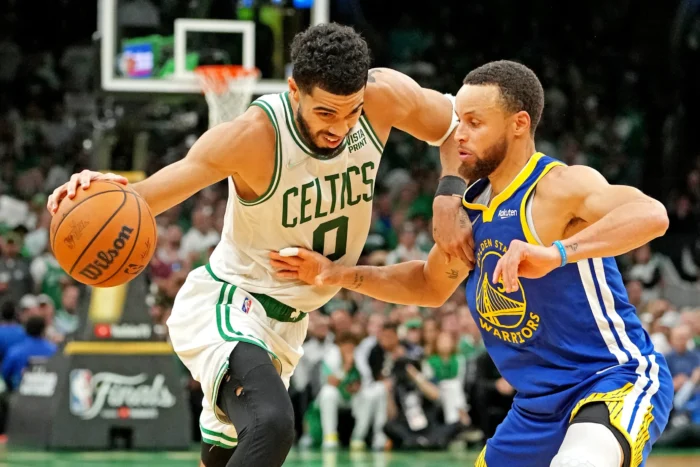
Source: rappler.com
A personal foul in the NBA refers to a rule violation committed by a player against an opponent. It is one of the most common types of fouls in basketball and can occur during various situations on the court. When it comes to personal fouls in the NBA, there are a few important points to consider:
1. Personal fouls involve physical contact between players that is deemed illegal or excessive by the officials. These fouls can include pushing, holding, striking, or impeding the progress of an opponent.
2. Each player is allowed a maximum of six personal fouls before being disqualified from the game. This rule ensures fair play and discourages excessive aggression.
3. When a personal foul is committed, the opposing team is awarded free throws or possession of the ball, depending on the situation. This gives the opposing team an opportunity to score and make up for the foul that was committed against them.
4. Excessive or intentional personal fouls may result in additional penalties, such as technical fouls or ejections from the game. These penalties are meant to deter players from intentionally harming or disrupting the flow of the game.
It is crucial for players to be mindful of their actions to avoid unnecessary personal fouls and to maintain fair play on the court. By staying disciplined and avoiding personal fouls, players can contribute to a positive and sportsmanlike environment. Now, let’s look at a true story involving a personal foul in the NBA:
During a close playoff game, with only seconds remaining on the clock, the score was tied. The star player, known for his aggressive style of play, was defending the opposing team’s best scorer. As time ticked down, the scorer attempted a last-second shot to win the game.
In an attempt to disrupt the shot, the star player made contact with the scorer’s arm, resulting in a personal foul being called. The scorer was awarded two free throws, and he calmly sank both shots, securing the win for his team. This incident serves as a reminder of the importance of staying disciplined and avoiding personal fouls in crucial moments.
2. Shooting Foul
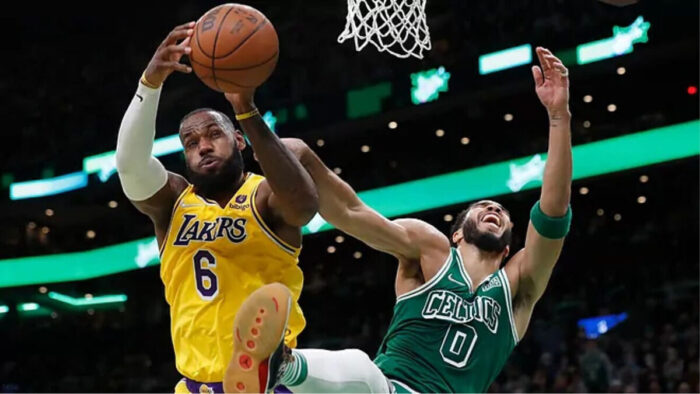
Source: nbablast.com
The shooting foul is one of the types of fouls in the NBA. Here is a list explaining the key aspects of a shooting foul:
- Free throws: When a shooting foul is called, the player who was fouled is awarded free throws. The number of free throws depends on the situation, such as whether the player was attempting a two-point or three-point shot.
- Shot continuation: If the shot is successful despite the shooting foul, the player is awarded the points and an additional free throw.
- Defensive contact: A shooting foul occurs when a defensive player makes contact with the shooter, affecting their ability to make the shot. The contact can be in the form of a push, a hit, or impeding the shooting motion.
- Penalty for defenders: In addition to the free throws awarded to the offensive player, the defender committing the shooting foul may also face consequences such as personal fouls or team fouls.
- Potential for four-point plays: In certain cases, when an offensive player makes a three-point shot and is fouled, they can be awarded a potential four-point play, consisting of the points from the shot and an additional free throw.
Understanding the concept of a shooting foul is important for players, coaches, and fans alike, as it directly impacts the flow and outcome of the game. It provides offensive players an opportunity to earn additional points and defenders must be cautious to avoid such fouls.
If blocking someone’s shot is a foul, then I must be a foul master at blocking out my ex’s messages.
3. Blocking Foul
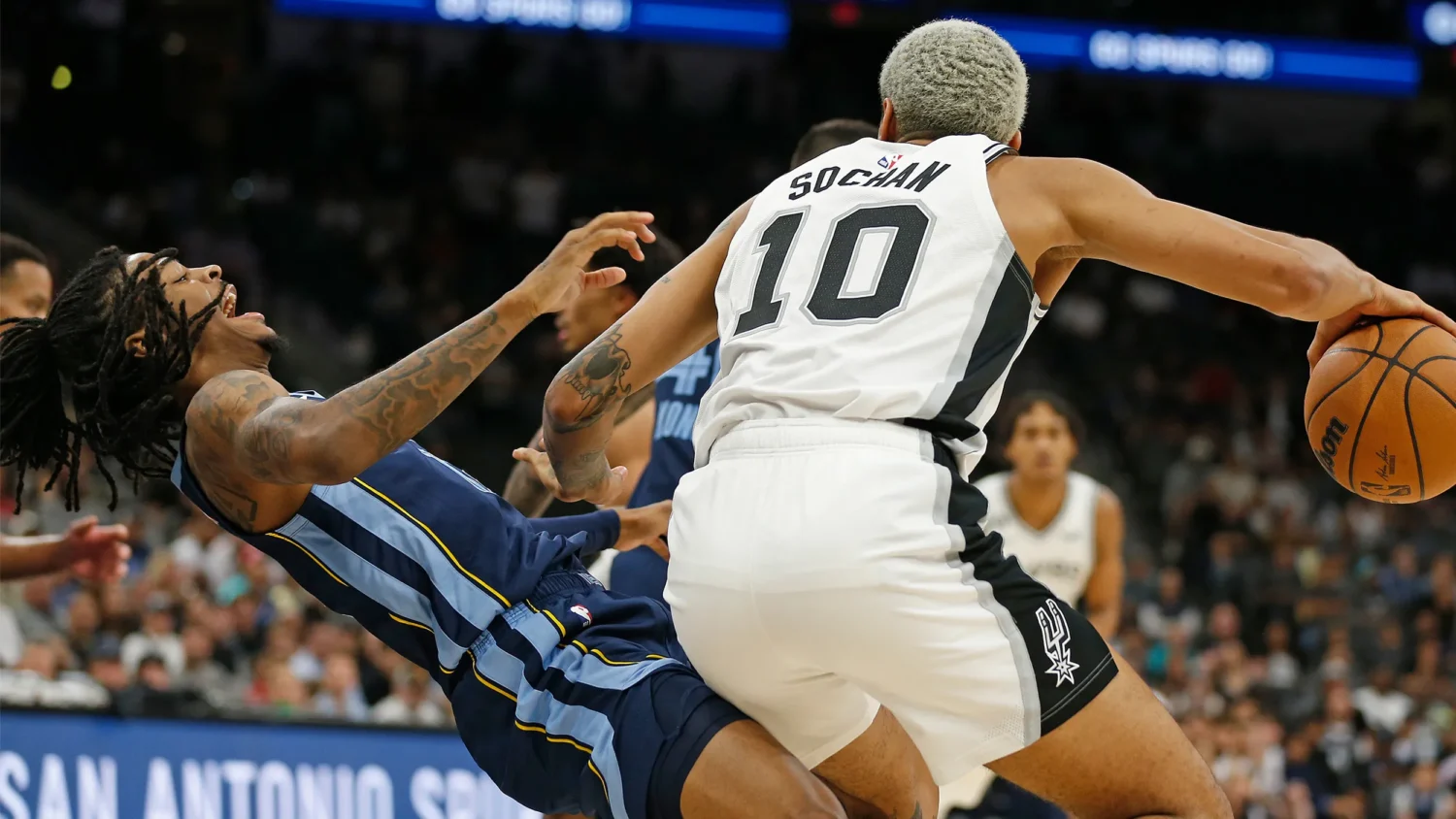
Source: lhongtortai.com
- A blocking foul occurs in the NBA when a defensive player impedes the progress or movement of an offensive player.
- To understand and identify a blocking foul, there are specific steps involved:
- The defensive player must be in a legal guarding position, meaning they have both feet on the floor and face the offensive player.
- The offensive player must have control of the ball or be in the process of shooting.
- The defensive player needs to initiate contact by moving into the offensive player’s path.
- This contact must have more than incidental impact on the offensive player’s speed, quickness, balance, or movement.
When all these steps are met, the referee will call a blocking foul. Depending on the situation, the offensive player will either be awarded free throws or the team will retain possession of the ball.
However, it’s important to note that there are circumstances where a blocking foul may not be called. For example, if the defensive player establishes a legal guarding position before the offensive player begins their upward shooting motion.
To summarize, a blocking foul in the NBA occurs when a defensive player illegally impedes the progress of an offensive player. The steps involved in identifying a blocking foul include the defensive player being in a legal guarding position, the offensive player having control of the ball, the defensive player initiating contact, and the contact impacting the offensive player’s movement.
4. Charging Foul
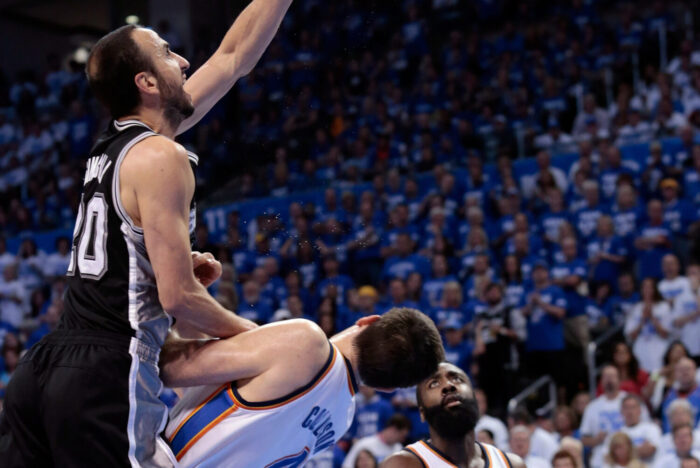
Source: bleacherreport.com
- The charging foul, also known as a personal foul, is one of the common fouls in the NBA.
- It occurs when an offensive player intentionally runs into a defensive player who has established their position.
- There are certain key points that everyone should understand about the charging foul:
- Firstly, the charging foul is called when the offensive player initiates contact by running into the defender, rather than avoiding them. This is an offensive foul.
- For a charging foul to be called, it is necessary for the defender to have established a legal guarding position. This means that the defender must be in the path of the offensive player before any contact is made.
- In addition to the defender’s position, the offensive player must also have control of the ball for a charging foul to be called.
- If a charging foul is called, it results in the offensive team losing possession of the ball.
- Conversely, the opposing team is awarded a throw-in from the sideline.
- Occasionally, a charging foul can lead to the offensive player being assessed a personal foul, which counts towards their total number of fouls.
- If a player accumulates a certain number of personal fouls, they may be disqualified from the game.
It is important to note that the charging foul is a subjective call made by the officials and can sometimes create controversy among players, coaches, and fans alike. It requires the officials to carefully assess the timing, positioning, and movements of both the offensive and defensive players.
To avoid charging fouls, offensive players should be highly aware of the defender’s positioning on the court and make necessary adjustments to their movements to avoid any possible contact. On the other hand, defensive players should aim to establish their position early and maintain it without making any lateral movements or extending their limbs to initiate contact.
The charging foul is a significant aspect of the game that can greatly impact the flow and outcome of a match. Therefore, it is crucial for players to have a deep understanding of the rules and regulations surrounding this type of foul in order to avoid penalties and maintain fair play.
While the information provided here is accurate, it is always advisable to refer to the official NBA rulebook for complete and up-to-date rules regarding fouls in the NBA.
5. Technical Foul
- A technical foul is a type of foul that is called against a player, coach, or team for unsportsmanlike conduct or behavior that violates the rules of the game.
- It results in a free throw for the opposing team and possession of the ball, unless it occurs during a shot attempt, in which case the opposing team receives the free throw and retains possession.
- Examples of behavior that can result in a technical foul include excessive arguing with referees, disrespectful behavior towards opponents or officials, or deliberately delaying the game.
- A player can also receive a technical foul for hanging on the rim after a dunk or using profanity on the court.
- When a player accumulates a certain number of technical fouls in a game or over the course of a season, they can be ejected from the game or face additional penalties, such as fines or suspensions.
6. Holding Fouls
When it comes to basketball, holding fouls can have a significant impact on the game. Here are some key aspects to consider regarding holding fouls:
Holding fouls occur when a player grabs onto their opponent, preventing them from moving freely or obtaining a better position.
They are considered personal fouls and result in the opposing team being awarded possession of the ball.
Holding fouls can be committed in various situations, such as when a player is trying to establish position to receive a pass or when defending against an offensive player.
Referees closely monitor holding fouls as they can impede the flow of the game and hinder fair competition.
Players need to be aware of the rules regarding holding fouls to avoid unnecessary penalties and maintain a fair playing environment.
Fact: Holding fouls can be a strategic tactic employed by players to disrupt their opponents’ offensive plays. Referees are trained to recognize and penalize such actions to maintain fairness on the court.
7. Reach-in Fouls
Reach-in fouls are one of the types of fouls that can occur in an NBA game. These fouls, known as reach-in fouls, involve a defensive player reaching in and making contact with the offensive player’s hand or arm while they are in possession of the ball. Reach-in fouls commonly occur when a defensive player tries to steal the ball from an offensive player.
Here are some key points to consider about reach-in fouls:
- Reach-in fouls, also referred to as reach-in fouls, are considered personal fouls and can result in the offensive player being awarded free throws or the team being awarded possession of the ball.
- Defensive players must be careful when attempting to steal the ball to avoid making contact with the offensive player’s hand or arm.
The severity of reach-in fouls can vary. Sometimes, a slight touch may be called as a foul while other times, a more forceful contact may be required for a foul to be called. - Reach-in fouls are often subjective and depend on the interpretation of the referees. What one referee may consider a foul, another referee may not.
Players who consistently commit reach-in fouls may be at risk of getting into foul trouble and may need to adjust their defensive techniques. - Reach-in fouls can disrupt the flow of the game and can have an impact on the outcome. It is important for both defensive and offensive players to understand the rules surrounding these reach-in fouls to minimize their occurrence and maximize their effectiveness on the court.
Flagrant Fouls in NBA
Flagrant fouls in the NBA are a topic that sparks intense debate and captivates basketball fans worldwide. In this section, we will dive into the two types of flagrant fouls: Flagrant 1 and Flagrant 2. Brace yourself for an inside look at these controversial plays as we explore their impact on the game and the consequences they carry. Get ready to uncover the intricacies of these fierce fouls and their significance in the high-stakes world of professional basketball.
1. Flagrant 1 Foul
The Flagrant 1 Foul is a type of foul in the NBA that is more severe than a common foul, but less severe than a Flagrant 2 Foul. Here is a list of important points to know about the Flagrant 1 Foul:
- Definition: The Flagrant 1 Foul, also known as an unnecessary or excessive contact against an opponent, is not considered a legitimate basketball play and can be dangerous or harmful to the opposing player.
- Punishment: When a Flagrant 1 Foul is called, the opposing team is awarded two free throws and possession of the ball. The player committing the foul is also given a personal foul. If a player accumulates multiple Flagrant 1 Fouls in a game or a season, they may face further disciplinary action from the NBA.
- Intent: The referee considers the intent of the player when determining whether a foul is a Flagrant 1 Foul. If the contact is deemed to be deliberate or with the intention of harming the opponent, it is more likely to be called as a Flagrant 1 Foul.
- Contact: The level of contact plays a significant role in determining a Flagrant 1 Foul. If the contact is excessive or unnecessary, such as a hard hit or violent swing, it is more likely to be called as a Flagrant 1 Foul.
- Player Safety: The NBA takes player safety seriously, and the Flagrant 1 Foul rule is in place to protect players from dangerous or malicious plays. The league aims to promote fair competition while ensuring the well-being of all participants.
2. Flagrant 2 Foul
The Flagrant 2 foul is a serious infraction in the NBA that carries severe consequences for the offending player. Here are some key points to understand about the Flagrant 2 foul:
- Involves excessive and unnecessary contact, usually committed with intent to harm the opponent.
- Results in an immediate ejection of the player who committed the Flagrant 2 foul.
- Leads to the opposing team being awarded two free throws and possession of the ball.
- Referees review the play to determine if the foul meets the criteria for a Flagrant 2 foul.
- Examples of a Flagrant 2 foul include punching, elbowing, or hitting an opponent with excessive force.
It is important to note that the NBA takes player safety very seriously, and such dangerous plays are not tolerated. The league implements these harsh penalties to deter players from engaging in overly aggressive behavior on the court. The Flagrant 2 foul serves as a strong deterrent against any actions that could potentially harm other players.
The severity of a Flagrant 2 foul can have a significant impact on the outcome of a game. Losing a key player to ejection not only reduces the team’s playing strength but also disrupts their game plan and strategy. Awarding the opposing team free throws and possession can dramatically swing the momentum in their favor, leading to potential scoring opportunities.
In summary, the Flagrant 2 foul is a serious offense in the NBA due to its potential for harm and the subsequent consequences. The league’s strict enforcement of this rule helps maintain player safety and the integrity of the game.
Importance of Fouls in NBA
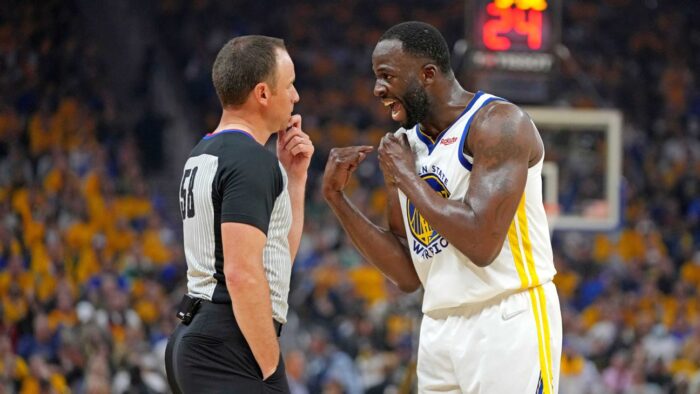
Source: abc7news.com
Fouls in the NBA play a crucial role, influencing the ebb and flow of the game, determining free throw opportunities, and even leading to players fouling out. Let’s dive into the significance of these fouls, exploring their impact on the game’s dynamics, the opportunities they create for free throws, and the consequence of players fouling out. Get ready to unravel the fascinating world of NBA fouls and their far-reaching implications on the game we love.
1. Impact on Game Flow
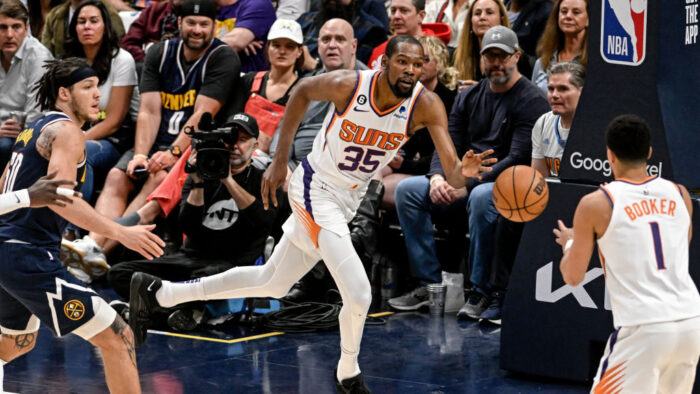
Source: arizonasports.com
The impact of fouls on the game flow in the NBA can significantly affect the flow of the game. Here are some ways in which fouls can influence the game flow:
- Disrupts momentum: When a foul is called, it interrupts the continuous play and breaks the momentum of the team in possession.
- Delays gameplay: Foul calls result in a pause in the game as the fouled player takes free throws or the team in possession takes the inbound. This delay can alter the rhythm and pace of the game.
- Changes strategy: Team strategies may need to be adjusted depending on foul trouble. If a key player accumulates fouls, coaches may choose to substitute them or modify playing minutes, impacting the overall game plan.
- Alters player aggressiveness: Frequent foul calls can make players more cautious and less aggressive to avoid further fouls. This can impact the intensity and competitiveness of the match.
- Provides strategic opportunities: Teams may intentionally commit fouls in certain situations, such as when the opposing team is in a crucial offensive position or during fast breaks, to prevent easy points or force the opponents to earn points from the free-throw line.
By understanding the impact fouls have on the game flow, players, coaches, and referees can make more informed decisions during gameplay. Strategies can be adapted, and adjustments can be made to maintain the desired momentum and competitiveness throughout the match.
Free throws in the NBA are like free therapy sessions for players, except they have to make their shots while everyone is watching.
2. Free Throw Opportunities
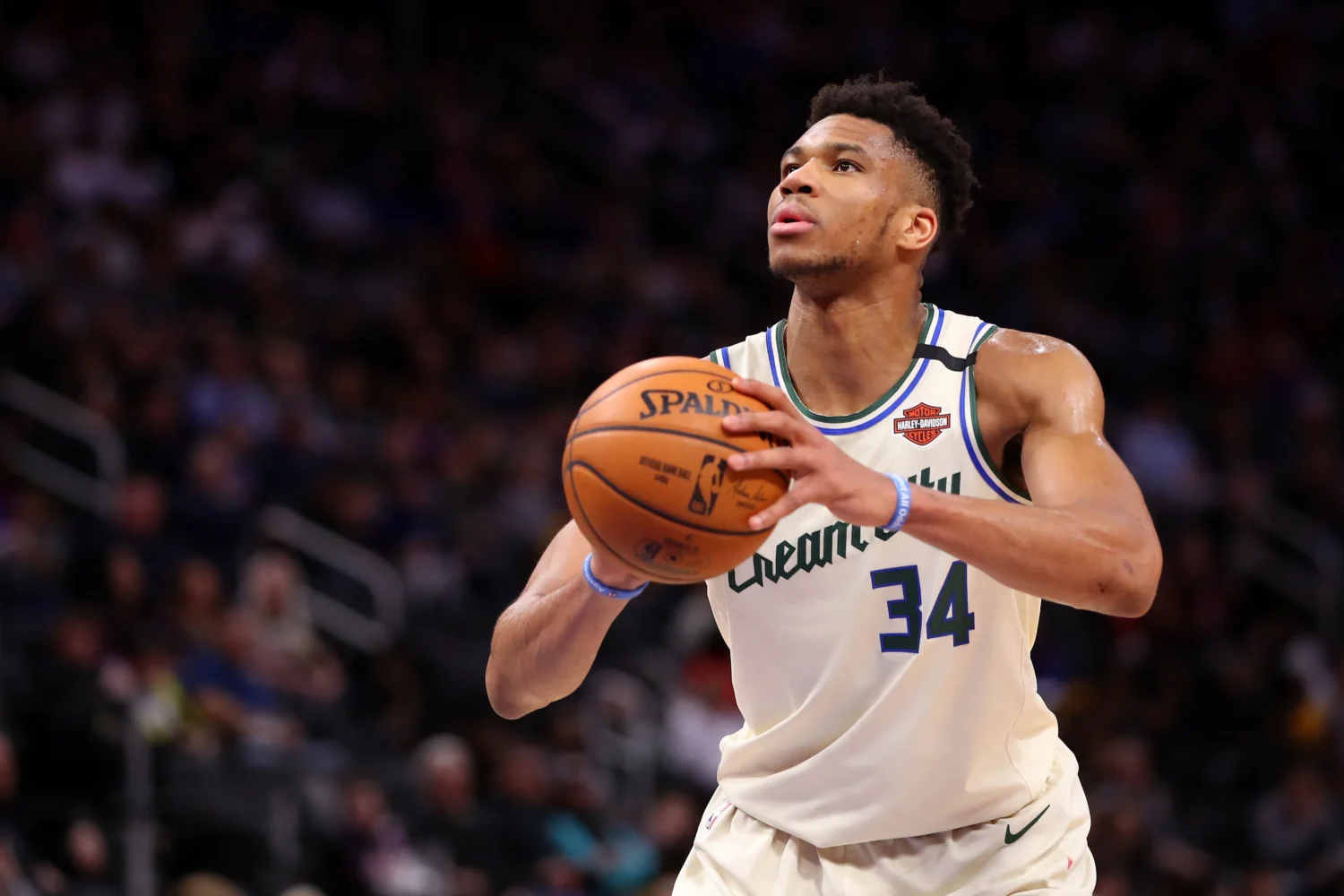
Source: jsonline.com
When a foul is committed in the NBA, it can result in an opportunity for the opposing team to score points from the free-throw line. Understanding the rules and implications of free throw opportunities is important in basketball:
- Identify the foul: The referee must identify and call the foul, whether it is a personal foul, shooting foul, blocking foul, charging foul, or technical foul.
- Determine the number of free throws: Depending on the situation, the number of free throws awarded can vary. Commonly, a shooting foul results in free throws, with the number of attempts determined by whether the shot was successful (1 free throw if the shot was made, 2 if the shot was missed). Non-shooting fouls typically result in 1 or 2 free throws as well.
- Assign the free throw shooter: The player who was fouled or, in some cases, the coach may select a player to shoot the free throws. This decision is typically based on the player’s free throw shooting ability.
- Take the free throws: The player shooting the free throws must step to the free-throw line and attempt their shots. They have 10 seconds to release the ball for each free throw attempt.
- Score the points: If the free throw is successful, the shooting team is awarded the appropriate number of points. If the attempt is missed, the ball is live and can be rebounded by either team.
2. Free Throw Opportunities play a crucial role in the outcome of a game, as they provide a chance to score points without the clock running. The number of free throw opportunities a team receives can affect momentum and strategic decisions by both teams.
3. Player Fouling Out
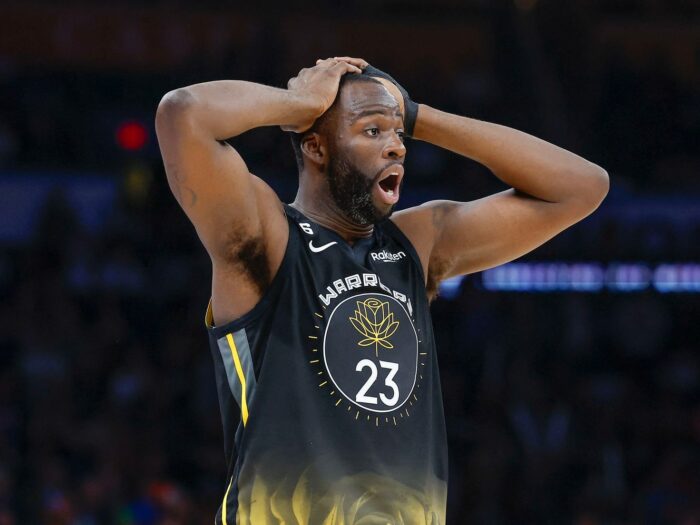
Source: en.as.com
When it comes to fouls in the NBA, one important aspect to consider is the player fouling out of the game. Here are the steps that lead to a player fouling out:
- A player accumulates five personal fouls throughout the course of the game.
- Each time a player commits a personal foul, it is recorded by the referee.
- Once a player reaches their fifth personal foul, they are immediately disqualified from the game and are considered to have fouled out.
It’s important to note that different levels of fouls, such as technical or flagrant fouls, do not contribute to a player fouling out. Only personal fouls count towards this rule.
Pro-Tip: As a player, it’s crucial to be aware of your fouls and manage them wisely. Avoid unnecessary contact and fouls that could lead to your disqualification from the game. Maintaining good defensive positioning and making smart decisions on the court can help prevent fouling out and ensure you can contribute to your team’s success until the end of the game.
Player Disqualification
Player Disqualification in the NBA refers to a situation where a player is removed from the game due to certain violations or accumulation of fouls. Here are some key points to understand about
Personal Fouls: Players are allowed a maximum of six personal fouls in a game. Once a player reaches their sixth personal foul, they are disqualified and must leave the game. This is to ensure fair play and prevent players from excessively fouling opponents.
Flagrant Fouls: A flagrant foul is a severe infraction that involves excessive contact or unsportsmanlike behavior. If a player commits a flagrant foul, they may be disqualified depending on the severity of the offense. The referee has the discretion to assess the penalty.
Technical Fouls: Similar to flagrant fouls, technical fouls are given for unsportsmanlike conduct or disrespectful behavior towards officials, opponents, or teammates. Accumulating too many technical fouls can result in player disqualification.
Consequences: When a player is disqualified, they must leave the game immediately. They cannot return to play unless there are specific circumstances, such as an overturned ruling by video review or a successful appeal against the disqualification.
It is important for players to exercise discipline and control their actions on the court to avoid player disqualification. The NBA aims to maintain a fair and competitive environment, and player disqualification serves as a deterrent for unsportsmanlike conduct or excessive fouls.
Referee Decisions
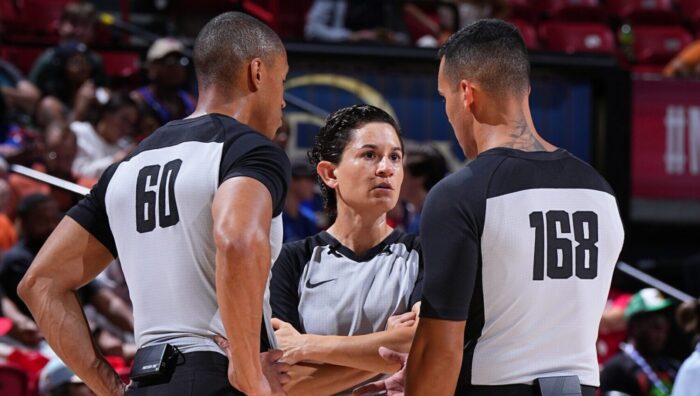
Source: nba.com
When it comes to NBA fouls, “referee decisions” naturally play a crucial role in determining the outcome of the game. Here are some key points to consider regarding “referee decisions” in NBA games:
1. Assessing foul severity: “Referees” must assess the severity of each foul based on its impact and intent. Whether it’s a personal foul, shooting foul, technical foul, or flagrant foul, “referees” consider the circumstances and consequences before making a decision.
2. Making split-second judgments: “Referees” need to make quick decisions in real-time, often in high-pressure situations. Their decisions are based on their knowledge of the rules and their understanding of game flow.
3. Consistency in calls: “Referees” strive to maintain consistency in their decision-making throughout the game. They aim to treat all players equally and apply the rules consistently to ensure fair play.
4. Communication with players and coaches: “Referees” play an important role in maintaining order on the court. They use effective communication skills to explain their decisions to players and coaches, helping to minimize confrontations.
5. Overturning or confirming decisions: “Referee decisions” can be reviewed through various methods, including video review and consultation with other officials. This allows for the correction of mistakes and ensures fairness in the game.
6. Impact on the game: “Referee decisions” can have significant consequences, such as awarding free throw opportunities to the opposing team or leading to player disqualification. It is important for “referees” to make accurate judgments to maintain the integrity of the game.
To enhance the effectiveness of “referee decisions” in NBA games, ongoing training and development programs are implemented. Utilizing advanced technology, such as instant replay systems, can further assist in ensuring the accuracy of calls. By consistently making fair and informed decisions, “referees” contribute to the overall quality and fairness of NBA games.
League Disciplinary Actions
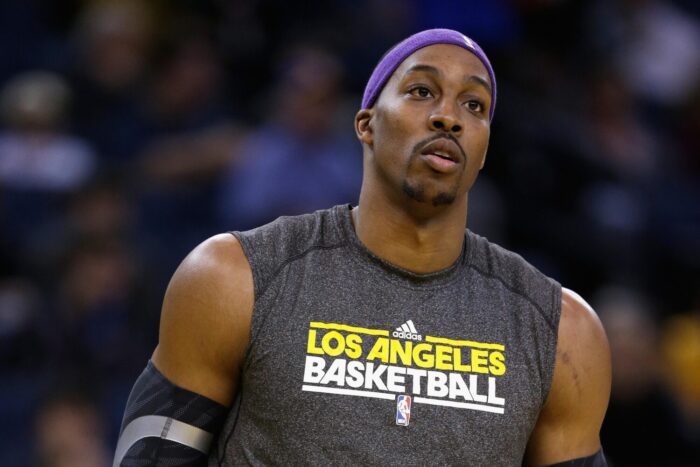
Source: bleacherreport.com
The NBA has a system in place called league disciplinary actions to maintain the integrity of the game and ensure player safety. These actions serve as consequences for players who commit fouls that go beyond the boundaries of fair play. Here are some important details about the NBA’s league disciplinary actions:
Fines: When players commit serious or deliberate fouls, they may be subject to monetary fines as a disciplinary measure. The amount of these fines can vary depending on the severity of the offense, ranging from a few thousand dollars to tens of thousands of dollars.
Suspensions: In more severe cases, players may face suspensions, preventing them from participating in games. The length of these suspensions depends on the nature of the offense and the player’s disciplinary history, lasting from a few games to several months.
Points System: Throughout the season, the NBA utilizes a points system to track players’ fouls. Each foul is assigned a specific number of points. When a player accumulates a certain number of points, they may face additional penalties, such as fines or suspensions.
Player Review: The NBA has a dedicated team responsible for reviewing game footage and assessing player actions. This allows them to determine if disciplinary actions are necessary. These reviews ensure consistent enforcement of rules across all teams and games.
Appeals Process: If players disagree with the disciplinary actions imposed on them, they have the option to appeal. The appeals process allows players to present their case and provide any necessary evidence to support their argument.
A real-life example of a league disciplinary action in the NBA took place during the 2019-2020 season. Dwight Howard of the Los Angeles Lakers was fined $35,000 for an obscene gesture towards a fan during a game. The league concluded that his action violated the NBA Code of Conduct, resulting in the fine.
It is vital for players to understand the consequences of their actions and uphold fair play in basketball. The NBA’s league disciplinary actions act as a deterrent and reminder of the significance of sportsmanship and respect both on and off the court.
Examples of Notorious Fouls in NBA History
Throughout NBA history, there have been numerous instances of noteworthy fouls that have left a lasting impact. From hard fouls to altercations between players, these incidents have shaped the league’s narrative and sparked debates among fans and experts.
By delving into the world of NBA fouls, we can gain a deeper appreciation for the game’s rules, the consequences of foul play, and the historical moments that have unfolded as a result.
Here are some examples of notorious fouls in NBA history:
- Flagrant foul: In 2006, during a game between the San Antonio Spurs and Phoenix Suns, Robert Horry delivered a hard hip check to Steve Nash, resulting in a flagrant foul. This aggressive play ignited a brawl and led to multiple suspensions for players on both teams.
- Hard foul: During the 1991 Eastern Conference Finals, Bill Laimbeer of the Detroit Pistons delivered a hard foul on Michael Jordan of the Chicago Bulls. Laimbeer’s rough play was notorious throughout his career and often drew criticism for his physical style of play.
- Technical foul: In 2007, during a game between the Dallas Mavericks and Denver Nuggets, Carmelo Anthony received a technical foul for a flagrant elbow to the head of Mavericks player, Dirk Nowitzki. Anthony’s actions resulted in his ejection from the game.
- Intentional foul: In the 1997 NBA Finals, Dennis Rodman of the Chicago Bulls intentionally tripped and kicked NBA player, Scottie Pippen, during a game against the Utah Jazz. Rodman’s actions were widely criticized and resulted in a suspension for the following game.
Fact: The highest number of technical fouls called in a single season in NBA history is 1,375, which occurred during the 2006-2007 season.
Frequently Asked Questions
How many fouls can a player commit before fouling out of an NBA game?
In the NBA, players are disqualified from playing in the game after committing six personal fouls. Other leagues like FIBA and NCAA only allow five fouls per game.
What happens if a team commits an excessive number of fouls in a quarter?
If a team commits more than four team fouls in a quarter in the NBA, the opposing team is awarded free throws. However, team fouls reset to zero at the start of a new quarter.
Are there any exceptions to the bonus rule for fouls in NBA games?
Yes, there are exceptions to the bonus rule. In the final two minutes of a quarter, once a team reaches their second foul, the opposing team is awarded a bonus free throw regardless of the number of team fouls. In overtime, the bonus rule applies once a team goes over three fouls.
What are offensive fouls in basketball?
Offensive fouls occur when offensive players commit illegal contact towards the defense. When an offensive foul occurs, the offensive team loses possession of the ball.
What are some examples of unsportsmanlike conduct that can result in fouls in NBA games?
Unsportsmanlike conduct in NBA games can lead to fouls. This includes actions such as interfering with the ball, preventing the ball from being thrown to a free throw shooter venturing the three-point line extended, preventing play from being resumed after a timeout, and excessive timeouts.
